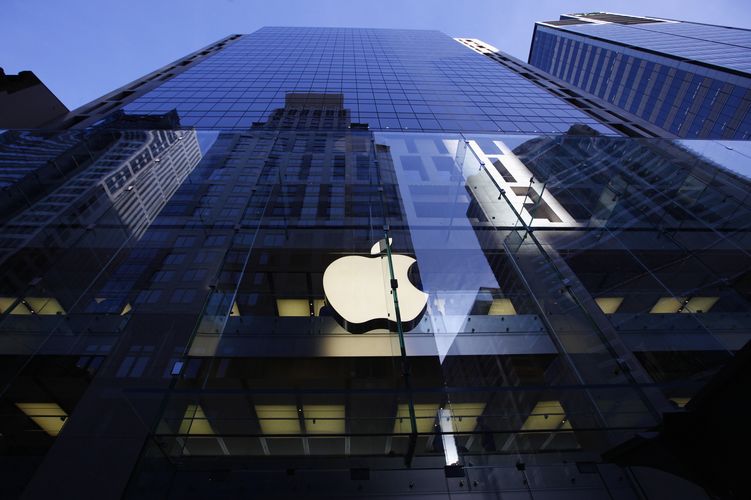With a US$200bn capital return programme to fund by 2017, Apple has completed this year’s funding by looking beyond the domestic market.
It is almost as though the Apple debt programme were created by Sir Jonathan Ives himself, the company’s much lauded chief designer famed for the sleek industrial look of its products. With four deals and very little issue premium, tech company Apple (Aa1/AA+) has pretty much completed its US$17bn funding requirements for 2015.
The Cupertino-based company set the tone in February with a US$6.5bn five-tranche deal through Deutsche Bank and Goldman Sachs. The company’s third trip to the bond market in as many years was as eagerly awaited by investors as the latest iPhone release is by early adopters. The tranches were split into a US$1.25bn five-year fixed-rate piece, US$500m of five-year floating-rate notes, a US$1.25bn seven-year, a US$1.5bn 10-year, and a US$2bn 30-year piece.
Although there were uncharitable mutterings that the book was not as large as it had been in the past, at US$20bn it was more than respectable by most standards and allowed the company to upsize from the US$5bn it had been expecting to raise. Concessions too were minimal – nothing on the shorter pieces and only 5bp–8bp on the longer tranches.
This was followed by a four-tranche US$8bn deal in early May via Goldman Sachs, Bank of America Merrill Lynch and JP Morgan. Again comfortably oversubscribed, Apple did have to pay a 10bp premium on all tranches, but this had more to do with market conditions than the credit itself.
What has driven issuance for Apple for the past few years is a programme to return US$200bn of capital to shareholders by the end of 2017. From the inception of its capital return programme in August 2012 until March this year, Apple has returned more than US$112bn to shareholders, including US$80bn in share repurchases.
“While most of our programme will focus on buying back shares, we know that the dividend is very important to many of our investors, so we’re raising it for the third time in less than three years,” said Apple’s CEO Tim Cook.
It is sometimes hard to remember that until 2013 Apple had never visited the debt global markets for the simple reason that it had no debt. But, as founder Steve Jobs frequently noted, success is in the details.
Recognising that it is cheaper to fund both the share buyback scheme and dividends via debt rather than through its significant US$178bn offshore cash reserves – which would require the company to pay tax – the company sold its first US$17bn deal in February 2013. It was followed up last year with an even more successful US$12bn seven-tranche bond issue that attracted a book of US$41bn and allowed the company to print pretty much flat to its existing issues in the secondary market.
What is significant now is that the company is looking abroad for funding. It is true, of course, that Apple did debut in euros last year. It sold a dual-tranche €2.8bn (US$3.06bn) deal at eight and 12 years, both of which were priced at the tight end of guidance and performed well in secondary trading.
Beyond the US
But there are two reasons that Apple is looking outside the US. The first is to trade on the famous Apple mystique. At the end of May, the tech company knocked sector rival Google off its perch to reclaim its position as the world’s most valuable brand again, according to the BrandZ top 100 brand rankings compiled by Millward Brown, a research agency owned by WPP.
So despite having raised U$48bn in the markets over the past couple of years, using other currencies allows the company to play on the same rarity value it does with its products. This has allowed bookrunners to build sizeable books and tighten pricing.
The second reason is the swap. When swapped back into dollars, issuance in other currencies has been cheaper for Apple while still offering a meaningful coupon for investors.
A couple of weeks after its US$6.5bn deal in February, Apple sold a SFr1.25bn (US$1.34bn) two-tranche deal that, with a certain amount of inevitability, was immediately named the iSwissie. Through Goldman Sachs and, this time, Credit Suisse, Apple split the considerably upsized deal into a SFr875m 10-year tranche and a SFr375m 15-year tranche. The longer tenors were needed because of the negative swap rate in the Swiss franc out to nine years.
The bond’s subsequent textbook performance – both pieces duly tightened – has allowed Apple to look east. In early May, it mandated Goldman Sachs and Mitsubishi UFJ Financial Group to arrange investor meetings ahead of what is likely to be a ¥200bn (US$1.62bn) Samurai.
Thanks to rock-bottom interest rates, the Japanese market makes sense for Apple. The bonds will target Japanese investors looking for a decent pick-up over domestic treasuries. That will still allow Apple to swap back to US dollars with a significant cost saving.
By any stretch of the imagination the bond, which is expected to appear in June, is going to be one of the deals of the year. Certainly, it will be the biggest issue by a foreign company in the market since Citigroup’s six-tranche fixed and floating ¥270bn transaction in June 2007.
Once that is completed, Apple is in the fortunate position of being able to issue in euros or even in sterling if market conditions are right, but crucially it doesn’t need to.
“We view Apple’s financial risk profile as minimal,” said S&P in a report at the end of last year. That will allow Apple to sit back and whip up the same kind of frenzy that it does for its products.
To see the digital version of this report, please click here
To purchase printed copies or a PDF of this report, please email gloria.balbastro@thomsonreuters.com

